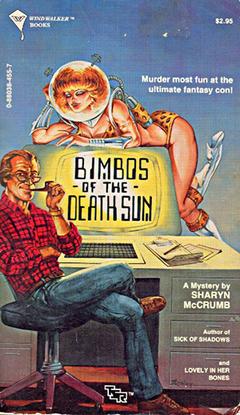Related Research Articles

Thomas Edison State University (TESU) is a public university in Trenton, New Jersey. The university is one of New Jersey's 11 senior public institutions of higher education. Thomas Edison State University offers degrees at the undergraduate and graduate level.

Granville Tailer Woods was an American inventor who held more than 50 patents in the United States. He was the first African American mechanical and electrical engineer after the Civil War. Self-taught, he concentrated most of his work on trains and streetcars. One of his inventions is the Synchronous Multiplex Railway Telegraph, a variation of the induction telegraph that relied on ambient static electricity from existing telegraph lines to send messages between train stations and moving trains.

Anne Perry was a British writer best known as the author of the Thomas and Charlotte Pitt and William Monk series of historical detective fiction.
Ann Rae Rule was an American author of true crime books and articles.

Lis Wiehl is a New York Times bestselling American author of fiction and nonfiction books, and a legal analyst. She is the author of twenty books, including, most recently, A Spy in Plain Sight: The Inside Story of the FBI and Robert Hanssen―America's Most Damaging Russian Spy, published by Pegasus Books.

Jun-ichi Nishizawa was a Japanese engineer and inventor. He is known for his electronic inventions since the 1950s, including the PIN diode, static induction transistor, static induction thyristor, SIT/SITh. His inventions contributed to the development of internet technology and the information age.

Ruth Arnon is an Israeli biochemist and codeveloper of the multiple sclerosis drug Copaxone. She is currently the Paul Ehrlich Professor of Immunology at the Weizmann Institute of Science, where she is researching anti-cancer and influenza vaccinations.
Thomas Edison has appeared in popular culture as a character in novels, films, comics and video games. His prolific inventing helped make him an icon and he has made appearances in popular culture during his lifetime down to the present day. He is often portrayed in popular culture as an adversary of Nikola Tesla.

The SPARK Museum of Electrical Invention is an interactive museum located in Bellingham, Washington, United States, which offers educational experiences for audiences of all ages through galleries and public programs that illustrate the development and use of electricity, radio and the related inventions that changed the course of human history. The museum features a collection of artifacts showcasing four centuries of human innovation from 1580 into the 1950s.

Bimbos of the Death Sun is a 1987 mystery novel by Sharyn McCrumb.

Benjamin Garver Lamme was an American electrical engineer and chief engineer at Westinghouse, where he was responsible for the design of electrical power machines. Lamme created an efficient induction motor from Nikola Tesla's patents and went on to design the giant Niagara Falls generators and motors and the power plant of the Manhattan Elevated Railway in New York City.
The University of Washington firebombing incident was an arson which took place in the early morning hours of May 21, 2001 when a firebomb was set off at Merrill Hall, a part of the University of Washington's Center for Urban Horticulture, causing an estimated $1.5 to $4.1 million in damages. By 2012 four of five accused conspirators behind the attack admitted their guilt in plea bargains. A fifth committed suicide in federal detention while awaiting trial.
Patricia D. Daniels is an American engineering educator known for her work on educational accreditation. She is a professor emerita of electrical and computer engineering at Seattle University, and an affiliate professor of electrical and computer engineering at the University of Washington.
Phyllis C. Richman is an American writer and former food critic for The Washington Post for 23 years, a role that led Newsweek magazine to name her "the most feared woman in Washington". Washingtonian magazine listed her as one of the 100 most powerful women in Washington.

Stephanie Seneff is a senior research scientist at the Computer Science and Artificial Intelligence Laboratory (CSAIL) of the Massachusetts Institute of Technology (MIT). Working primarily in the Spoken Language Systems group, her research at CSAIL relates to human-computer interaction, and algorithms for language understanding and speech recognition. In 2011, she began publishing controversial papers in low-impact, open access journals on biology and medical topics; the articles have received "heated objections from experts in almost every field she's delved into," according to the food columnist Ari LeVaux.
Mary Elizabeth (Betz) Halloran is an American biostatistician who works as a professor of biostatistics, professor of epidemiology, and adjunct professor of applied mathematics at the University of Washington.

Dorit Rubinstein Reiss is a Professor of Law and the James Edgar Hervey '50 Chair of Litigation at UC Hastings College of Law. She has also worked for the Hebrew University of Jerusalem and the Israeli Ministry of Justice's Department of Public Law.
Rebecca Morris is a New York Times bestselling true-crime author and a TV, radio and print journalist who lives in Seattle, Washington.

Theresa Marie Korn was an American engineer, radio enthusiast, and airplane pilot. The first woman to earn an engineering degree from what is now Carnegie Mellon University, she was the author of multiple books on engineering and mathematics.
Barbara Wilson is the pen name of Barbara Sjoholm, an American writer, editor, publisher, and translator. She co-founded two publishing companies: Seal Press and Women in Translation Press. As Barbara Sjoholm, she is the author of memoir, essays, a biography, and travelogues, including The Pirate Queen: In Search of Grace O’Malley and Other Legendary Women of the Sea, which was a finalist for the PEN USA award in creative nonfiction. She is also a translator of fiction and nonfiction by Norwegian and Danish writers into English, and won the Columbia Translation Award and the American-Scandinavian Translation Award. As Barbara Wilson, she has written two mystery series and has won several awards for her mystery novels, including the British Crime Writers Association award and the Lambda Literary Award. She is known for her novel Gaudi Afternoon, which was made into a film directed by Susan Seidelman in 2001.
References
- ↑ "Fiction novel finds a setting in scientific history". Bainbridge Island Review. May 16, 2013.
- ↑ "About Us - Informed Choice Washington".
- ↑ Herzog, Katie (2019-01-30). "Vaccine Skeptics Fight Washington Bill to End Personal Exemptions". The Stranger. Retrieved 2019-07-24.
- 1 2 "Adam Woog, The Seattle Times. May 13, 2012. Crime Fiction: Seattle Area Authors set their mysteries here, there, and Cincinnati". Archived from the original on March 3, 2016. Retrieved May 21, 2013.
- ↑ Publishers Weekly, May 30, 2011, A Spark of Death: A Professor Bradshaw Mystery
- ↑ Publishers Weekly, Jan. 30, 2012, Fatal Induction: A Professor Bradshaw Mystery.
- ↑ Publishers Weekly, April 15, 2013, Capacity for Murder: A Professor Bradshaw Mystery.
- ↑ Publishers Weekly, July 14, 2014, The Edison Effect: A Professor Bradshaw Mystery.